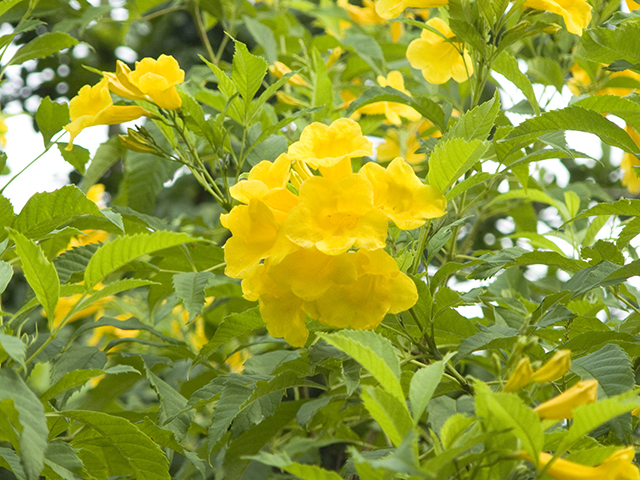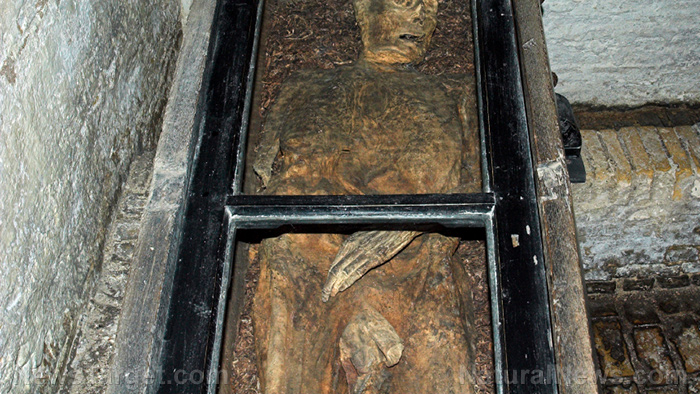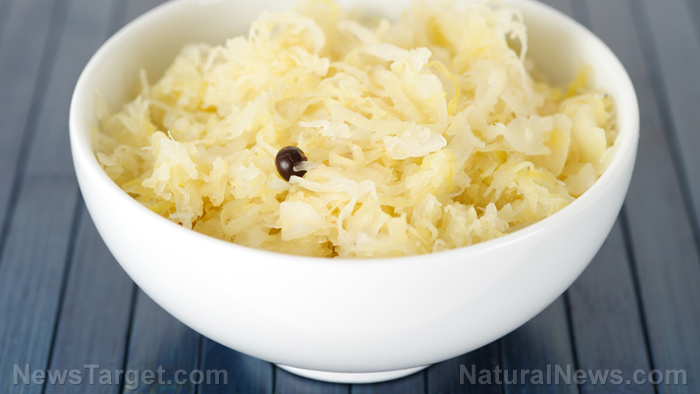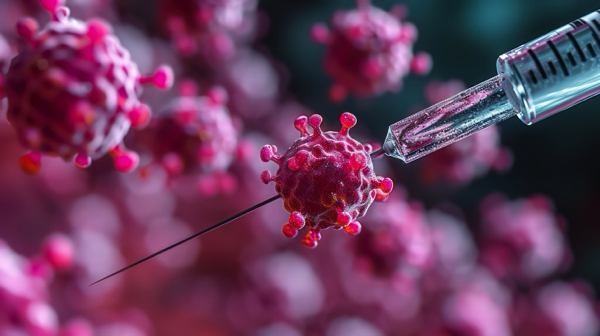 Parler
Parler Gab
Gab
- Cancer diagnoses are on the rise, with experts noting unusual trends and treatment resistance.
- Prominent physicians urge a shift towards holistic and natural treatments, including the use of tree barks like Pau d'Arco, Cat's Claw, and Cascara Sagrada.
- Traditional oncology methods are criticized for failing to address the root causes of cancer, such as inflammation and immune dysfunction.
- The panelists advocate for a return to the precautionary principle and more rigorous, transparent research.
- Specific tree barks contain compounds that are anti cancerous, starting with pau do arco, cats claw, and cascara sagrada.
Doctors challenge mainstream cancer treatment paradigm
In a bold challenge to the conventional cancer treatment paradigm, a group of leading medical experts gathered at the Independent Medical Alliance conference in Atlanta, Georgia, from April 4-6, to sound the alarm over a concerning spike in cancer diagnoses and the growing resistance to traditional therapies. The panel, comprising seasoned oncologists and pathologists, called for a radical reevaluation of cancer treatment strategies, emphasizing the need for holistic approaches and the exploration of natural remedies. Dr. Ray Page, a practicing oncologist with over three decades of experience, shared his observations from the front lines of cancer care. "In my 30 years of practice, the last few years have been unlike anything I've seen," Page said. "The cases I've encountered since the onset of the COVID-19 pandemic are particularly alarming, with trends that deviate from historical patterns." The Centers for Disease Control and Prevention (CDC) reported under 1.8 million new cancer cases in 2021, but the National Cancer Institute projects over 2 million diagnoses by 2024, a significant and troubling increase. The panelists highlighted the critical role of inflammation and immune dysfunction in the rise of aggressive cancer cases. Dr. Paul Marik, Chief Medical Officer for the alliance, criticized the limitations of traditional oncology methods. "Radiation and chemotherapy often fail to destroy cancer stem cells, the root of malignancy," Marik said. "In fact, radiotherapy can enhance the generation of these stem cells, leading to recurrence and resistance to treatment." Dr. Ryan Cole, a pathologist, emphasized the complexity of cancer, noting that the disease is not a monolith but a vast array of unique conditions. "The textbooks list over 200 types of cancer, but the reality is far more complex," Cole said. "Each individual's cancer is unique, influenced by trillions of cells and countless variables. This complexity demands a more nuanced and personalized approach to treatment." Dr. Lynn Fynn, another panelist, pointed to the potential role of inflammation linked to lipid nanoparticles, which are used in mRNA vaccine delivery, as a contributing factor. "We're seeing late-stage diagnoses of aggressive cancers that are resistant to conventional therapies," Fynn said. "Unchecked inflammation is a recipe for disaster, and we need to address this at the root level." The panelists proposed a comprehensive health strategy that includes dietary changes, reduced exposure to environmental chemicals, and a focus on whole foods. "Avoid chemicals in the diet and eat real food," Fynn advised. "Foods that are free from heavy processing and questionable ingredients can play a crucial role in cancer prevention and treatment."Natural remedies: the power of tree barks
Anti-cancer compounds abound in nature. Three tree barks stand out for their potent anti-cancer properties: Pau d'Arco, Cat's Claw, and Cascara Sagrada.Pau d'arco: lapachol, a potent anti-tumor agent
Pau d'Arco, derived from the inner bark of the Tabebuia avellanedae tree, has been a staple in traditional South American medicine for centuries. The bark contains several bioactive compounds, with lapachol being the most notable. Lapachol has been extensively studied for its ability to inhibit tumor growth and modulate immune responses. Antioxidant properties: Pau d'Arco is rich in naphthoquinones, particularly lapachol and beta-lapachone, which exhibit strong antioxidant properties. These compounds help neutralize free radicals and reduce oxidative stress, a key factor in cancer development. Anti-inflammatory effects: The bark inhibits the production of pro-inflammatory cytokines and reduces the activation of nuclear factor-kappa B (NF-κB), a transcription factor central to the inflammatory response. By modulating inflammation, Pau d'Arco may prevent the microenvironmental changes that promote tumor growth. Cytotoxicity to cancer cells: Studies have shown that Pau d'Arco bark extracts are cytotoxic to various cancer cell lines, inducing apoptosis (programmed cell death) in prostate cancer cells, for example.Cat's claw: immune stimulation and cancer prevention
Cat's Claw, or Uncaria tomentosa, is a woody vine native to the Amazon rainforest. The bark and root of the plant have been used in traditional medicine for their anti-inflammatory, antioxidant, and immune-stimulating properties. Stimulation of immune function: Cat's Claw significantly increases the activity of natural killer (NK) cells, which play a crucial role in the body's defense against cancer by recognizing and destroying tumor cells. Inhibition of NF-κB activation: Cat's Claw reduces the proliferation of colon cancer cells by inhibiting the activation of NF-κB, a transcription factor often overactivated in cancer cells. Induction of apoptosis: Extracts from Cat's Claw have been shown to induce apoptosis in various human tumor cell lines, including leukemia. Anti-inflammatory and antioxidant activities: The bark contains pentacyclic oxindole alkaloids (POAs) and tannins, which exhibit strong anti-inflammatory and antioxidant properties, further supporting its potential as a cancer preventive agent.Cascara sagrada: emodin induces apoptosis
Cascara Sagrada, derived from the bark of the Rhamnus purshiana tree, is less well-known in the context of cancer treatment but has shown promise in supporting overall health and potentially aiding in cancer prevention. Laxative properties: Cascara Sagrada is traditionally used as a gentle laxative, which can help maintain a healthy digestive system and reduce the risk of colorectal cancer. Antioxidant and anti-inflammatory effects: The bark contains anthraquinones - specifically emodin - which have antioxidant and anti-inflammatory properties, contributing to its potential role in cancer prevention.A call for change and transparency
The panelists concluded that rebuilding public trust in medicine and prioritizing objective, transparent research are essential to addressing the growing complexities of cancer. "The gold standard is a well-controlled, randomized trial," Fynn said. "But with so much conflicted interest in clinical research, we need to critically evaluate new interventions for safety before widespread adoption." As the medical community grapples with the rising tide of cancer diagnoses, the call for a more holistic and natural approach resonates with many. The use of tree barks like Pau d'Arco, Cat's Claw, and Cascara Sagrada offers a promising path forward, one that aligns with the body's natural defenses and supports overall well-being. Sources include: YourNews.com TheEpochTimes.com Pubmed.gov Pubmed.gov ContemporaryPediatrics.com Pubmed.gov Pubmed.govAncient mummies rewrite human history with “ghost” lineage discovery
By Willow Tohi // Share
The sweet power of Honey: A versatile superfood for health and wellness
By Laura Harris // Share
DMSO and Natural Dyes: A suppressed cancer treatment resurfaces in independent research
By Finn Heartley // Share
DMSO and Natural Dyes: A suppressed cancer treatment resurfaces in independent research
By finnheartley // Share
STAGING BEFORE RELEASE: WHO Runs 2-Day Pandemic Simulation ‘Exercise Polaris’
By sdwells // Share









